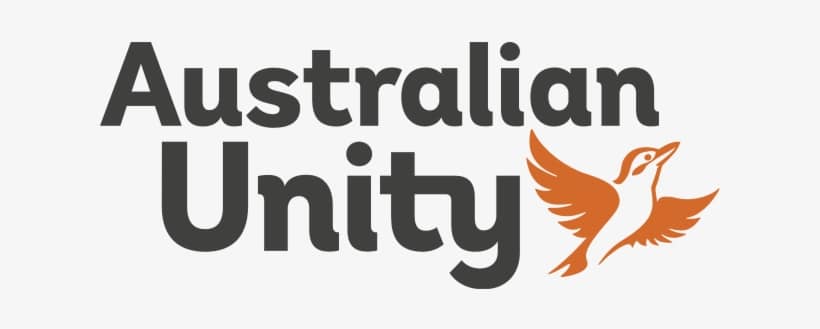Why compare health insurance through Savvy?
Our comparison tool doesn't cost you a cent, allowing anyone to compare offers from trusted insurers around Australia for free.
You can consider the inclusions, premiums, benefits and other key factors easily with us, whether you're at home or on the go.
Considering offers from trusted insurance providers can help give you peace of mind that you're comparing high-quality policies.
Brands you can compare with us



We’ve partnered with Compare Club to bring you a range of health insurance policies to compare side by side.
The cost of transport to hospital via ambulance isn’t covered by Medicare, so if you have an unexpected need for urgent hospital treatment, the ambulance ride can end up costing thousands of dollars. However, the cost and cover you have access to will depend on which state you live in, as it works differently across different parts of Australia. This is where private health insurance can help with the cost of your ambulance transport.
You can compare your options for ambulance cover here through Savvy. You’ll be able to consider online ambulance cover quotes side-by-side here through Savvy today. Start the process with us today to find out what cover you may need to help you be prepared for any unexpected ambulance trips.
What is ambulance cover and how does it work?
Most ambulance cover is a form of health insurance that can help pay for the cost of transport to hospital by ambulance. It’s available as a separate form of insurance on its own with some insurers, known as ambulance-only cover, or it can be provided in a package along with hospital cover, extras cover or a combined hospital and extras policy. Options to take out ambulance cover include:
Private health ambulance cover
Private health insurance policies often include ambulance cover with either hospital cover or extras cover. Be sure to check the exact details of what your policy covers, as some ambulance policies just cover transport to the nearest accident and emergency department, whilst others also include inter-hospital transfers, in case you need to travel from one hospital to another to receive your medical treatment.
Ambulance subscriptions
In some areas, the state or territory-based ambulance service offers direct subscriptions to the public, which cover you for ambulance transport not only in your home state but also nationwide. For instance, St John Ambulance NT is one example of such a region-based service.
State-funded ambulance cover
Some states in Australia provide ambulance cover for all their residents free of charge, both within the state and sometimes nationwide. Other states may offer free transport for pensioners and Centrelink recipients.
Federal funding for veterans’ ambulance transport
All Department of Veterans Affairs Health Card holders are entitled to free ambulance transport, both for emergency transport to hospital and also in many cases to attend non-urgent medical appointments.
What is and isn’t included under ambulance cover?
Ambulance cover can vary in the cover that it offers, so it’s important to compare policies carefully and make sure you understand what the limitations are.
- Some insurers provide cover for all ambulance travel
- Others only provide cover for ground transport (and exclude air evacuations, such as by the Royal Flying Doctor Service, Air Ambulance Australia or CareFlight Air Ambulance)
- Some health funds do provide cover for non-urgent transport and transfers to other medical facilities, while others don’t
- Call-out fees (where a patient calls an ambulance, but receives treatment on-site and is not transported to hospital) may be covered by some funds, but not others
- Co-payments may or may not be covered (where a patient is billed for a co-payment for non-urgent transport)
Because the range of cover provided by health funds varies so much, it’s important to compare private health insurance ambulance cover so you understand exactly what coverage you’ve got. You can compare ambulance cover policies side-by-side right here through Savvy.
What are the different rules for ambulance cover around Australia?
The need for ambulance cover varies across the country as each state and territory in Australia has different rules regarding ambulance transport. The rules for each state are as follows:
ACT
Ambulance cover is provided free for:
- Pensioners who hold a Health Care Card
- Concession Health Care Card holders
All other ACT residents need private ambulance health insurance
NSW
Ambulance cover is provided free of charge for:
- Health Care Card holders
- Pensioner Concession Card holders
- Commonwealth Seniors Health Care card holders
All other NSW residents need private ambulance health insurance
NT
Free ambulance transport is provided for the following:
- Centrelink Pensioner Concession Card holders
- Health Care Card holders
All other NT residents need private ambulance health insurance. Subscriptions to the NT St John Ambulance Service are also available.
QLD
All emergency ambulance treatment and transport costs are covered by the state government, so no private ambulance cover is required by Queensland residents. This extends to transport required for Queensland residents in another state or territory.
SA
Subscriptions to the state’s SA Ambulance Service are available, or else private ambulance health insurance is required. There are no concessions for pensioners available.
TAS
The Tasmanian state government provides free ambulance transport within the state for all Tasmanian residents, so no private ambulance cover is required on the island state. However, the state only has reciprocal agreements with the ACT, NT, Victoria and WA.
VIC
Free ambulance transport is provided to the following (in limited circumstances):
- Pensioner Concession Card holders
- Health Care Card holders
However, if the holder of one of these cards is transported from a private hospital or healthcare facility, the cost of that ambulance transport is passed onto the private health provider, who may choose to bill the patient. All other VIC residents need private ambulance health insurance. Subscriptions are available to the state ambulance service, Ambulance Victoria.
WA
Ambulance services are provided to the following free of charge for medically necessary, emergency and urgent ambulance transport:
- Residents who are over 65 years of age and receive an Australian Government pension
All other WA residents need private ambulance health insurance. Subscriptions are available to the state ambulance service, St John WA.
The types of health insurance
Frequently asked questions about ambulance cover
If you don’t have private health insurance, such as ambulance-only cover, through a subscription that covers the cost of your ambulance transport, you could be left having to pay the full cost. This can amount to hundreds or even thousands of dollars. For example, in Victoria, the call-out fee for rural emergency road transport by ambulance is $1,927 (correct as of March 2023). Standalone ambulance cover can be bought for just a few dollars a week and is even provided as part of many hospital cover or family hospital and extras policies.
Rules about the cover provided to customers when they are interstate vary between health funds, and there is no national standard which applies in all states and territories. As such, it’s important to check with your insurer to determine what you can and can’t be covered for.
Waiting periods exist to ensure that private health insurance costs are kept down for all Australians. There isn’t usually a waiting period for emergency ambulance services. However, there may be a waiting period for non-urgent transport, such as if you require ambulance transport home after back or hip replacement surgery. Where waiting periods are present, they may range from just one day to one to two months.
This will depend on the nature of your health emergency. If you are seriously injured, for example in a car crash, you will be taken to the nearest accident and emergency department which is appropriate for the care you require. This may not be the nearest hospital to the site of the accident, but the hospital which can provide the most appropriate treatment.
If you wish to be treated as a private patient, you may be able to choose to be transferred to the private hospital of your choice once your condition has been stabilised and you’re no longer in danger. This may apply if you receive urgent surgery and then require a longer hospital stay during your recovery period, for instance.
Helpful guides on health insurance
COMPARE HEALTH INSURANCE TODAY
Disclaimer:
Savvy is partnered with Compare Club Australia Pty Ltd (AFS representative number 001279036) of Alternative Media Pty Ltd (AFS License number 486326) to provide readers with a variety of health insurance policies to compare. Savvy earns a commission from Compare Club each time a customer buys a health insurance policy via our website. We don’t arrange for products to be purchased from these brands directly, as all purchases are conducted via Compare Club.
Savvy’s comparison service is provided by Compare Club. Compare Club compares selected products from a panel of trusted insurers and does not compare all products in the market.
Any advice presented above or on other pages is general in nature and doesn’t consider your personal or business objectives, needs or finances. It’s always important to consider whether advice is suitable for you before purchasing an insurance policy.
For any further information on the variety of insurers compared by Compare Club or how their business works, you can read their Financial Services Guide.













